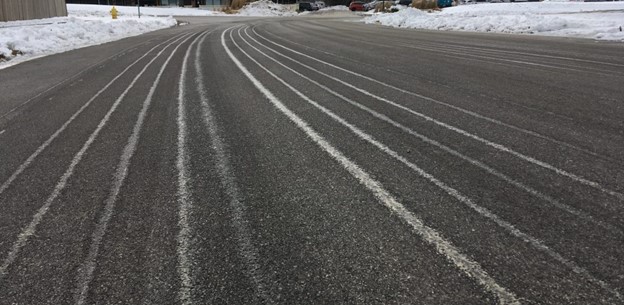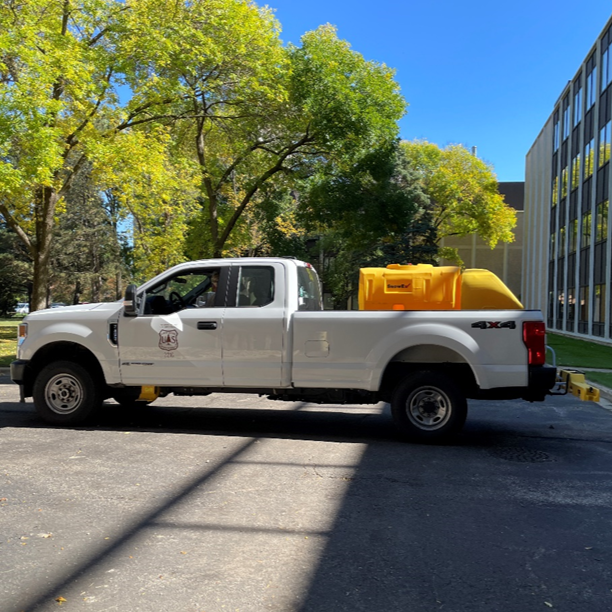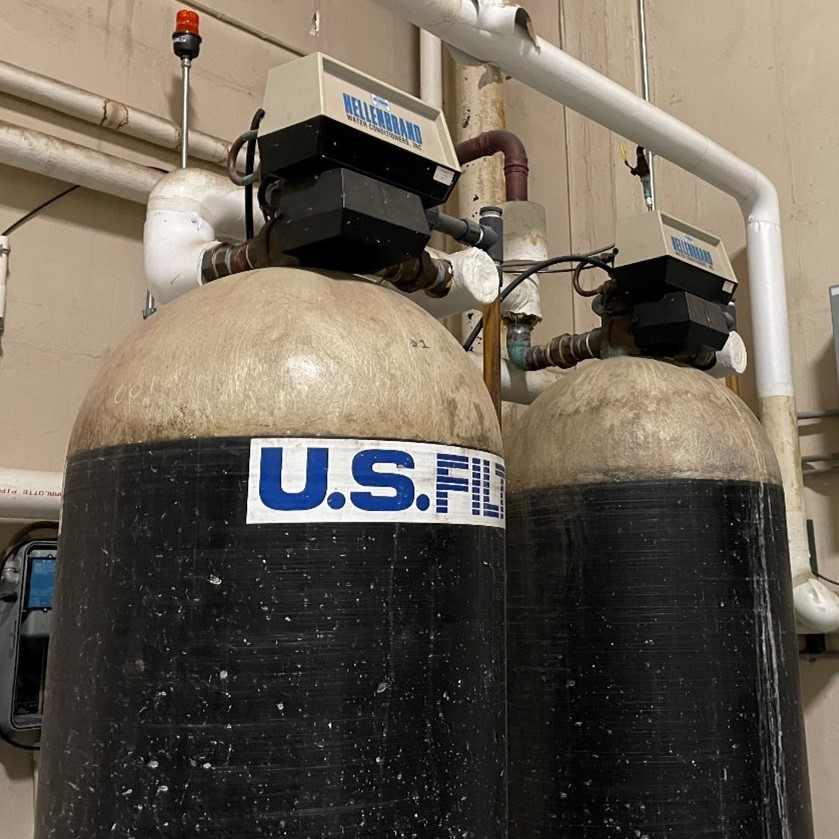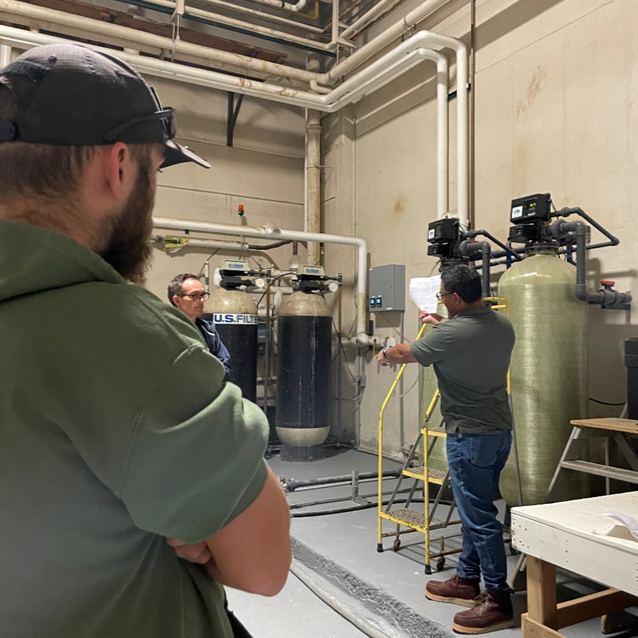
Freshwater salinization is a growing problem in Wisconsin and around the world. Working toward an overall salt use reduction goal, Madison Metropolitan Sewerage District offers Chloride Reduction Innovation Grants to incentivize projects that facilitate innovative and out-of-the-box thinking that result in permanent reductions of chloride to the sewer system. In 2021, the District awarded grant funding to Forest Products Laboratory in Madison, Wisconsin for their innovative thinking and beneficial reuse of water softener brine to reduce rock salt use and, ultimately, chloride levels in local waters.
A trailblazing effort with brine
After participating in Wisconsin Salt Wise training sessions on winter road maintenance, Forest Products Laboratory snow removal engineer Kevin Kramer and facility operations specialist Bob Ramos learned about brine anti-icing technology as a way to reduce winter rock salt use. However, having a source of the brine – either through purchase or production – is necessary. In thinking through anti-icing implementation throughout Forest Product Laboratory buildings and grounds, the duo had a revelation: there was potential to repurpose brine already produced by water softeners, rather than investing in costly brine makers or finding a source for purchase. With the support of program assistant Kathy Drake, they transformed this idea into a project plan and submitted their formal grant application.
The team at Forest Products Laboratory is not the first to have this lightbulb moment of seeing softener brine waste as something valuable. But because they staff an in-house maintenance department with skilled trade groups like HVAC, plumbers, welders, machinists, electricians and electronic technicians, as well as a sophisticated building automation system, they were able to draft a plan to take the idea from concept to a reality, complete with automation. Their ability to design, build and automate the process from start to finish set them apart during the application process and demonstrated their commitment to pushing the boundaries of salt reduction efforts.
Capturing softener brine for anti-icing
Forest Product Laboratory’s multi-functional labs require soft water use, so discontinuing water softening is not a viable option. By reusing the brine, they double the value of their softener operation. Now, instead of going down the drain, their salt is getting repurposed for winter anti-icing.
The brine recovery project cost just under $10,000 total and took about a year to become fully operational. Before implementing the project, over 20 tons of rock salt per year were used for winter operations. After incorporating water softener brine for anti-icing efforts they experienced remarkable reductions. In the first year, they used 15 tons of rock salt or a 25% reduction. By year two with the brine capture system fully operational, they used only six tons of rock salt during the winter season for a 70% salt reduction.



Sharing the wealth
“The automated process is very impressive,” said District pollution prevention specialist Catherine Harris. “Having the foresight to figure out a creative reuse for something otherwise seen as a waste, the engineering of the automated system, and the salt savings are all fantastic. I’m even more excited that Forest Products Laboratory has been sharing their learning with others.”
In 2023, Forest Products Laboratory hosted an open house paired with a sold-out Salt Wise training to show off their system.
Forest Products Laboratory staff have also started building connections with local organizations that could benefit from some of their brine since their facility’s system is far from tapping into its full potential. The brine-making system, which currently taps only one of their many sets of softeners, can capture and store over 7,000 gallons of brine per year. Winter maintenance on their grounds requires only a small fraction of that quantity and staff have been working on finding other winter maintenance practitioners who could use the brine they’re creating. If you’re interested in reclaimed water softener brine from Forest Products Laboratory, email wisaltwise@gmail.com for details.
For a look at the brine recovery equipment in action, watch a Channel 3000 / News 3 feature on the project. In-depth information on the mechanics and setup are documented in a Salt Wise webinar with the Forest Products Laboratory team covering the project background and how they got the system up and running. And, be sure to visit the Chloride section of our website for additional resources on reducing salt pollution in fresh water systems.
Article by Catherine Harris
As of this publication, we had no knowledge of other organizations implementing Forest Product Laboratory’s idea of brine repurposing. If organizations are interested in using a similar system or in receiving funding support, reach out to our Pollution Prevention team. Grant applications are accepted on a rolling basis.






